Archives
- August 2018
- July 2018
- May 2018
- April 2018
- March 2018
- December 2016
- November 2016
- October 2016
- September 2016
- August 2016
- July 2016
- June 2016
- April 2016
- March 2016
- February 2016
- January 2016
- December 2015
- October 2015
- September 2015
- August 2015
- July 2015
- June 2015
- May 2015
- April 2015
- March 2015
- November 2014
- October 2014
- March 2014
- February 2014
- January 2014
- December 2013
- November 2013
- October 2013
- August 2013
- July 2013
- June 2013
- May 2013
- April 2013
- March 2013
- February 2013
- January 2013
- December 2012
- November 2012
- October 2012
- September 2012
- August 2012
- July 2012
- June 2012
- May 2012
- April 2012
- March 2012
- February 2012
- January 2012
- December 2011
- November 2011
- October 2011
- September 2011
- August 2011
- July 2011
- June 2011
- May 2011
- April 2011
- March 2011
- February 2011
- January 2011
- December 2010
- November 2010
- October 2010
- September 2010
- August 2010
- July 2010
- June 2010
- May 2010
- April 2010
- March 2010
- February 2010
- January 2010
- December 2009
- November 2009
- October 2009
- September 2009
- August 2009
- May 2009
- April 2009
- March 2009
Posts Tagged ‘Pullets’
Newest Arrivals
Our flock of chickens grew this week. Four new arrivals, 2 Welsummer and 2 Blue Wyandotte pullets were added to the coop. I hadn’t really planned on adding more hens this early, but when I realized some of my girls were getting on in years, slowing down their egg production, and my friend and chicken breeder Larry had 3-month old’s in the breeds I was thinking about, the plan sped up by a few months.
I’ve never really been interested in the plain production breeds like Leghorns, Barred Rocks or Rhode Island Reds. I want hens that are colorful, not only in their feathers, but also in their eggs. I already have Americana’s that lay blue-green eggs, and Black Cochin’s and New Hampshire’s that lay light brown eggs. The only thing missing was a breed that lays the dark chocolate brown eggs, like those Cadbury chocolates wrapped in shiny gold paper.
There are only two breeds that lay such dark brown eggs—Marans and Welsummer’s. Marans tend to be a little pricey for egg layers and relatively hard to come by, but Welsummer’s are more common. They are a Dutch breed…a combination of several breeds really. But, over time they have been refined and standardized by poultry breeders who took a fancy to them as soon as they were imported. Through selective breeding they have become a nice temperate addition to farm flocks, and the dark brown eggs they lay are an added bonus.
(Welsummer hens)
The Blue Wyandotte is a variety of the Wyandotte breed, meaning they are a “color” of the breed. Wyandotte’s come in a several different colors from golden and silver laced, to white, black and buff. There are even Columbian, partridge and silver penciled giving any poultry lover a wide range of colors and feather patterns to choose from.
Wyandotte’s are an American breed used for both egg production and meat. Although I like them for their solid medium brown eggs, I also think they are just what a chicken should be…plump, fluffy and fun to watch scratching in the garden.
(Blue Wyandotte Hen)
Right now they are housed in six foot long wire caged that was used when we raised meat rabbits. The cage will keep them safe at this young age, away from circling hawks and feral cats, and allow the other chickens to get use to new additions. Although I don’t think Sophia (our goose) is to keen on the idea of more chickens in the coop.
So…in a few months the flock will add a wonderful dark brown color to my daily collection of farm fresh eggs.
Breakfast can’t get any better than that!
Turkey Trots
That sunny day I was wishing for turned out to be just a pipe dream. I woke up yesterday morning to rain. Not a huge storm, mind you, but enough to throw me off my outdoor schedule and dampen my spirits. It was a slap in the face. A wake up call that winter, even in California, is not over yet. Welcome to March!
I was outside assessing the storm damage (thankfully none) and checking on the chickens when I got a call from my friend and fellow 4-H leader. One of our club members had ordered their batch of turkey pullets for our county fair in August. The family didn’t want all 25 birds and was polling other club members to see if we could take some off their hands. While Sandy and I chatted for a while I could see, in my minds eye, turkey tracks across freshly tilled garden soil, a parade of them as they scoured the garden for grubs and bugs and treats of spent lettuce. I was surprised how nostalgic it made me for raising turkeys, something I never thought I’d miss. But, raising poultry here on the farm and seeing them through to dinner tables or holiday gatherings is one of the most rewarding experiences I’ve had as a small suburban farmer.
I haven’t raised turkeys in a while, but I want a small flock of them again. I think Midget Whites this time. Or maybe even the Broad-Breasted White raised up to 12 or 15 pounds. If my family won’t dine on them there are plenty of folks around looking for a naturally raised, free-range bird come holiday time. It’s something to think about for small suburban farmers. Compact, easy to care for, with manageable space requirements. Unlike sheep or gardens, birds don’t need the capital and fences up front like a flock of ewes would. Ten turkeys could be raised for the price of one registered sheep and the cash from selling the birds at Thanksgiving could be put toward improvements or other homestead operations. It’s time to start planning for the future, folks; of a working homestead and not just a personal supermarket.
To read more about raising turkeys on your suburban homestead check out these helpful resources.
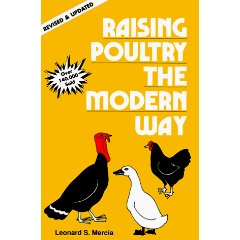
Books Links
http://web1.msue.msu.edu/poultry/poultry/e1259/e1259.pdf
http://extension.unh.edu/resources/representation/Resource000475_Rep497.pdf
![]() photo credit: bgblogging
photo credit: bgblogging
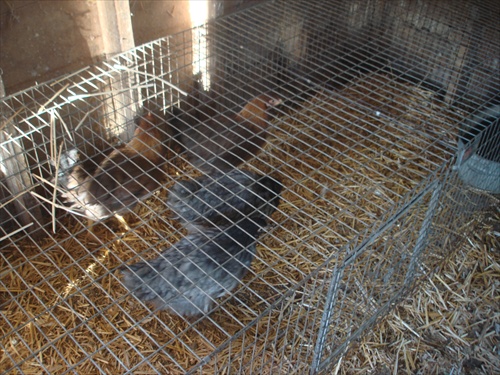
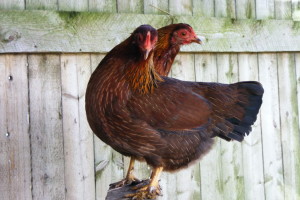
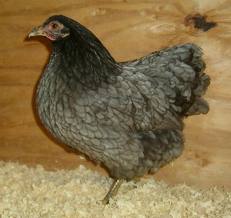
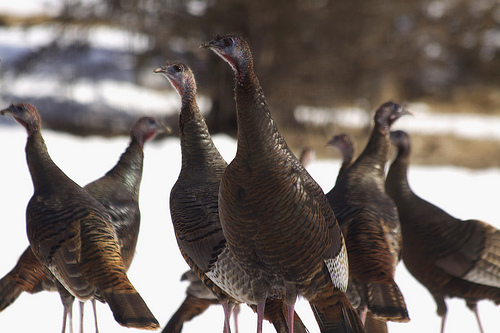
Recent comments
Aenean nonummy hendrerit mauris. Phasellus porta.